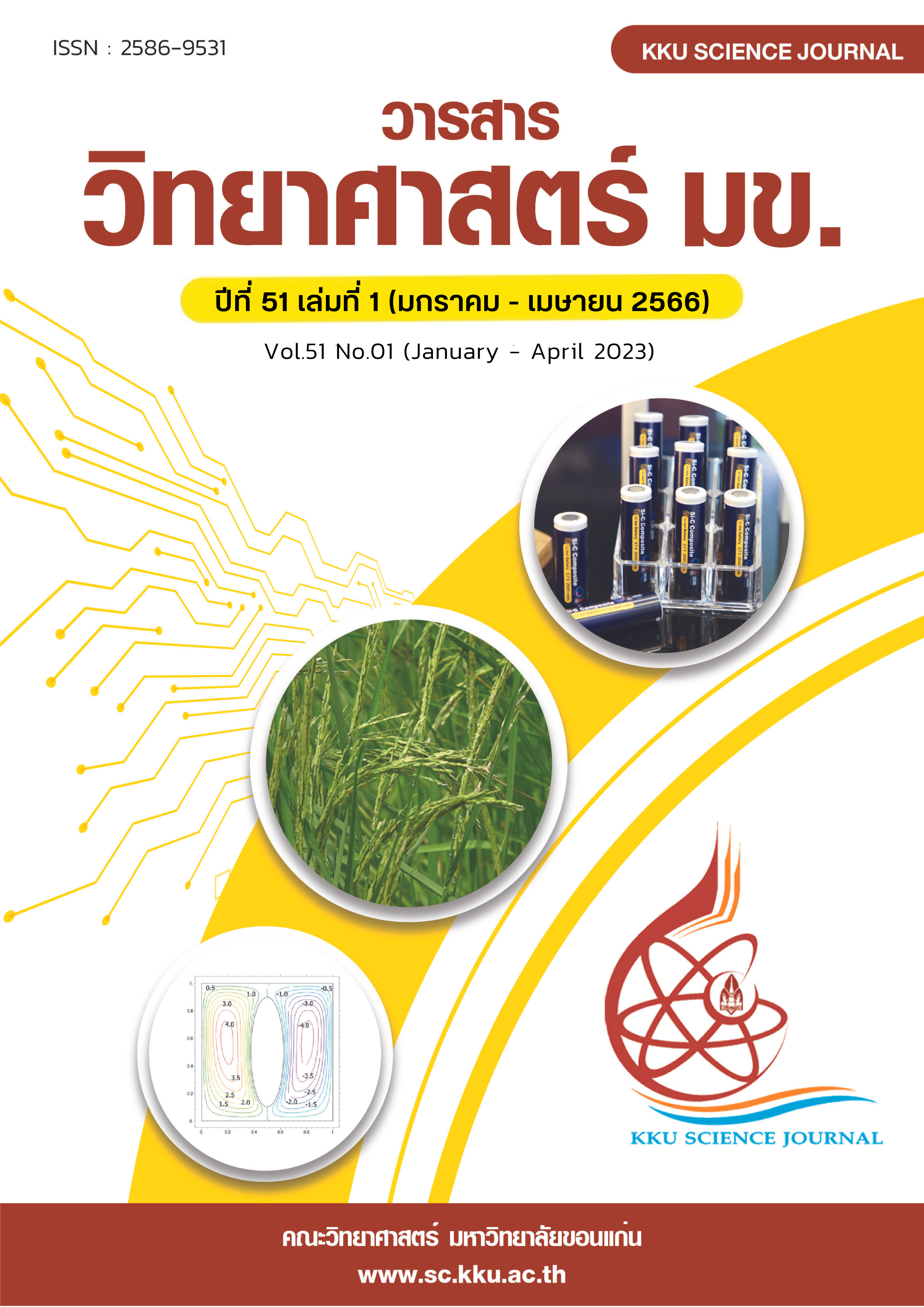An Analysis of Thai Traditional Pharmacy: The Medicinal Materials used for Treating Fever Symptom in the National Thai Traditional Medicine Formulary
Main Article Content
Abstract
This study is qualitative research. All of the data were collected and analyzed from the National Thai Traditional Medicine textbook. This study focused on the utilization of herbal medicinal formulas and medicinal plants to treat a symptom of fever. According to the inclusion criteria, 15 herbal medicinal formulas were selected from textbooks and they were consisted of 128 types of medicinal plants. The herbal medicinal formulas that have been selected contain medicinal plants that are easy to find. Roots are the most frequently used parts of medicinal plants in herbal medicinal formulation. Methods of preparation and use of herbal medicinal formulation are grinding into powder following by dissolving in water (i.e., Nam kra sai ya) or grinding into powder following by moding with honey. The most popular way to use the herbal medicine is to take it. In addition, medicinal plants with the highest frequency ratio or FR of 7.813 are Santalum album L. and Tiliacora triandra (Colebr.). From the result of this study, it demonstrates the potential use of herbal medicine for future research and commercial purposes.
Article Details

This work is licensed under a Creative Commons Attribution-NonCommercial-NoDerivatives 4.0 International License.
References
เกศริน มณีนูน, บดินทร์ ชาตะเวที, จอมขวัญ ดาคง, นัฐพล เคียนขัน และนงลักษณ์ กุลวรรัตต์. (2560). การศึกษาภูมิปัญญาการใช้สมุนไพรรักษาโรคโลหิตระดูสตรีของหมอพื้นบ้านในจังหวัดกระบี่และสงขลา. วารสารวิทยาศาสตร์บูรพา 22(3): 243-258.
กรมการแพทย์แผนไทยและการแพทย์ทางเลือก. (2562). รายการตำรับยาแผนไทยแห่งชาติ เล่ม 2. พิมพ์ครั้งที่ 1. นนทบุรี: สามเจริญพาณิชย์ (จำกัด).
ดารณี อ่อนชมจันทร์. (2549). ภูมิปัญญาการแพทย์พื้นบ้านอีสาน. พิมพ์ครั้งที่ 2. กรุงเทพฯ: องค์การสงเคราะห์ทหารผ่านศึก.
วิญญู วงศ์วิวัฒน์. (2556). ภูมิปัญญาการรักษาโรคสะเก็ดเงินของหมอพื้นบ้านในจังหวัด สงขลา พัทลุง ตรัง และสตูล. ปริญญานิพนธ์การแพทย์แผนไทยมหาบัณฑิต. บัณฑิตวิทยาลัย มหาวิทยาลัยสงขลานครินทร์.
วิชัย โชควิวัฒน, สุวิทย์ วิบุลผลประเสริฐ และประพจน์ เภตรากาศ. (2553). รายงานการสาธารณสุขไทยด้านการแพทย์แผนไทย การแพทย์พื้นบ้าน และการแพทย์ทางเลือก. กรุงเทพฯ: โรงพิมพ์องค์การสงเคราะห์ทหารผ่านศึก.
สมชาย ชินวานิชย์เจริญ. (2558). ไข้ไม่ทราบสาเหตุ. แหล่งข้อมูล: http://www2.manager.co.th. ค้นเมื่อ 27 ตุลาคม 2562.
สมภพ ประธานธุรารักษ์, พร้อมจิต ศรลัมพ์ และธนุชา บุญจรัส. (2553). กายวิภาคและสัณฐานวิทยาของพืช. ภาควิชาเภสัชพฤกษศาสตร์ คณะเภสัชศาสตร์ มหาวิทยาลัยมหิดล.
Hipol, R.L.B., Cariaga, M.F.N.M. and Hipol, R.M. (2012). Anti- inflammatory activities of the aqueous extract of the stem of Tinospora crispa (Family Menispermaceae). Journal of Nature Studies 11: 88–95.
Jongchanapong, A., Singharachai, C., Palanuvej, C., Ruangrungsi, N. and Towiwat, P. (2010). Antipyretic and antinociceptive effects of Ben-cha-lo-ka-wi-chian remedy. Journal of Health Research 24(1): 15-22.
Juckmeta, T. and Itharat, A. (2012). Anti - inflammatory and antioxidant activities of Thai traditional remedy called “Ya-ha-rak”. Journal of Health Research 26(4): 205-210.
Pal, A., Mahmud, Z.A., Akter, N., Islam, S. and Bachar, S.C. (2012). Evaluation of Antinociceptive, Antidiarrheal and Antimicrobial Activities of Leaf Extracts of Clerodendrum indicum. Pharmacognosy Journal 4(30): 41-46.
Sidde, L., Malathi S., Swethalatha, S. and Rajani, K. (2018). A brief review on Clerodendrum indicum. International Journal Indigenous Herbs Drugs 3: 1-4.
Trotter, R.T. and Logan, M.H. (1986). Informant consensus: A new approach for identifying potentially effective medicinal plants. In: Etkin NL (Ed.), Plants in Indigenous Medicine and Diet: Biobehavioral Approaches. New York: Redgrave Publishing Company. 91–112.
Vasudevan, S.C.N., Kariyil, B.J. and Neerakkal, I. (2019). Antipyretic activity of aqueous extract of heart wood of Pterocarpus santalinus L. in yeast induced pyrexia. Journal of Pharmacognosy and Phyto-chemistry 8(3): 244-246.
Weerawatanakorn, M., Rojsuntornkitti, K., Pan, M.H. and Wongwaiwech, D. (2018). Some Phytochemicals and Anti - inflammation Effect of Juice from Tiliacora triandra Leaves. Journal of Food and Nutrition Research 6(1): 32-38.


